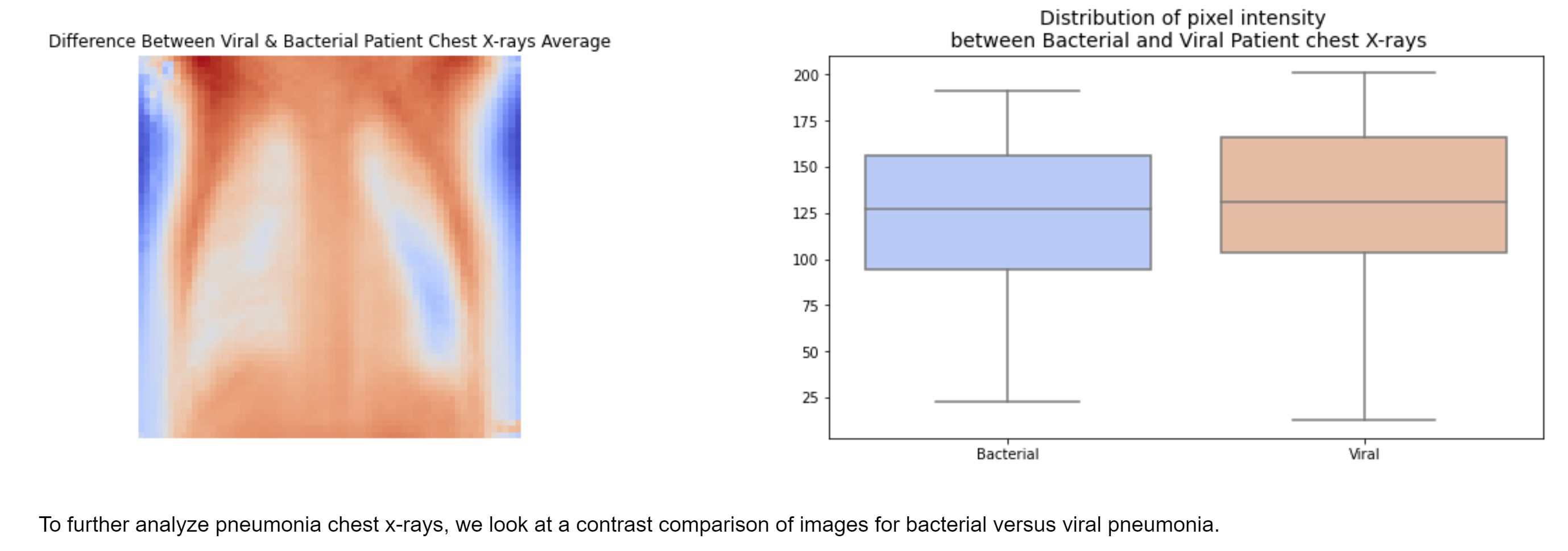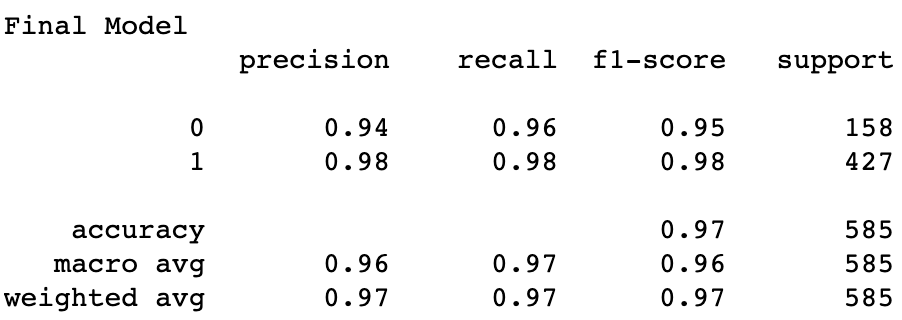Authors: Ijeoma Akamnonu ,Alexandra Bruno
We built a convolutional neural network to predict the prescence of pneumonia in chest x-rays of children. Due to our business problem, we prioritized recall and accuracy metrics. We were more tolerant towards false positives, but of course did not want to over predict on the pneumonia class, and for this reason we took accuracy metrics into consideration when evalutating our model.
Those who exam x-rays in order to make a diagonsis are required to obtain years of training. Having a predcitive model that can determine whether an x-ray shows signs of pneumonia can be an extremely powerful too for understaffed health care facilities. This can be a helpful tool for the medical community to consider when resources need to better better allocated.
The data consists of 5,863 x-ray images. The data set shows both baterical and viral pneumonia
Data split
- Training set: 4101 images
- Validation set: 1170 images
- Testing set: 585 images
Looking at 5 random images from both classes, we noticed 2 types on pneumonia infections, bacterial and viral. So, with that, we can isolate these infection types to analyze them further and see if we can find any notable distinguishing features and characteristics.
Plotting the distribution of pixel intensity, or brightness, will help us clearly see where one class or type is more prominent. The more of that color in that region, the more intense its pixels are in that region. This may suggest some special activity about the disease.

We are not surprised to see more intense activity coming from the lungs for pneumonia patients, because pneumonia is a respiratory disease.
We can try to assume that normal x-rays have a wider range of pixel intensity due to its more defined, healthy features, but that would be an assumption in need of confirmation using patient age to infer skeletal, organ, and cartilage development.
To further analyze pneumonia chest x-rays, we look at a contrast comparison of images for bacterial versus viral pneumonia.

Viral infections tend to be drier and rarely cause the buildup of sputum. This piece of information seems to be in slight opposition with our findings. We can see spurts of blue within the red of the lungs. This suggests and confirms our knowledge that bacterial infections cause more mucus and sputum build up, so it would appear cloudier and brighter inside the lungs, where this build up is happening.
Given the size of the original images we chose to resize them to 256x256x pixels and greyscale the images.
For running the models we used an Adamn optimizer. The final model consists of 5 two-dimension convolutional layes and maxpooling layers, 2 dropout layers, and a flattening and densely connected layer. Recall and accuracy were the metrics we chose to optimize for this project.
The results of the model statisfied what we aimed to do initally, aim to have a high recall and accuracy score. Although the model isn't perfect, given that we had a week to complete the project we think this is a good start. Going forward we would like to implement other optimizers and try different hyperparameters to see if it is possible to improve the model further.
To better train our model on it's classification abilities, we can:
- experiment with further hyperparameters to improve recall and accuracy scores
- implement Principle Component Analysis to identiy any more significat distinguishing features that will help our model




